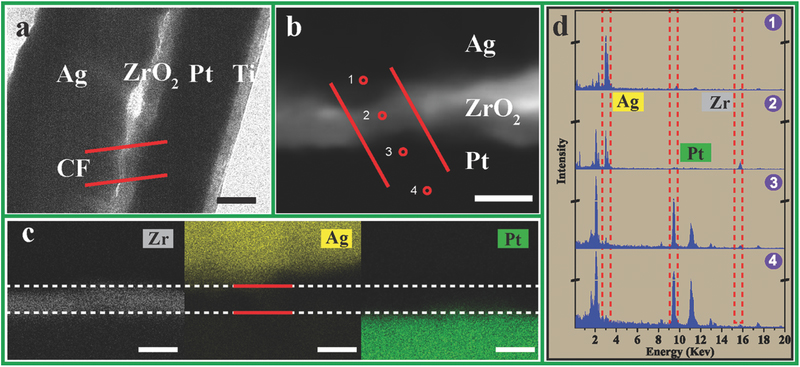Recently, research group in Institute of Microelectronics of the Chinese Academy of Sciences led by academician LIU Ming has made important progress in the research of Resistive Random Access Memory (RRAM).
Researchers improved the reliability of RRAM by increasing the ion barrier. Mobile computing and wearable devices can provide real-time, seamless communication. It has greatly changed the way people interact with the outside world.
With the large scale of the next generation mobile internet which can provide the Gbps data transmission rate, great challenges have been brought to the storage capacity, speed and power consumption of portable mobile terminals.
RRAM has the advantages of simple structure, high speed, low power consumption and easy 3D integration. It is considered as one of the most promising candidates for the next generation of high-density non-volatile memory, owing to its simple fabricating process and compatibility with complementary metal oxide semiconductor (CMOS) technology.
But there are some key issues that need to be overcome before RRAM can achieve large scale applications, especially the failure mechanism and reliability of the device.
Academician LIU Ming’s research Group systematicly work on the fabrication of the micro-machine based on the cation-resistance variable memory, performance control and integration technology.
On the basis of previous work, the research group has recently discovered that there is a competition between the SET and RESET process in the cation-based RRAM. It causes failure of reset operation of the device.
Through Transmission Electron Microscope (TEM) and Energy Dispersive Spectrometer (EDS) test analysis, the researchers found that the active metal which forms a conductive filament can diffuse into the Pt electrode under the action of an electric field, and form an additional active metal source in Pt electrode, which caused the failure of reset operation. The group proposes a solution to increase the ion barrier layer on the Pt electrode surface to inhibit the growth of conductive filament into the Pt electrode.
A new structure device with single layer graphene as ion barrier was developed. TEM results show that the graphene intercalation can effectively prevent the conductive filament from growing into the Pt electrode layer.
The experimental results show that the graphite intercalation device eliminates the failure of the reset operation, and still has excellent RRAM performance in improving the reliability of the device.
The main research results were published in Materials Advanced entitled" Eliminating Negative-SET Behavior by Suppressing Nanofilament Overgrowth in Cation-Based Memory", and was chosen as the cover article.
This research was supported by the National Fund Committee, the Chinese Academy of Sciences and the Ministry of science and technology.











